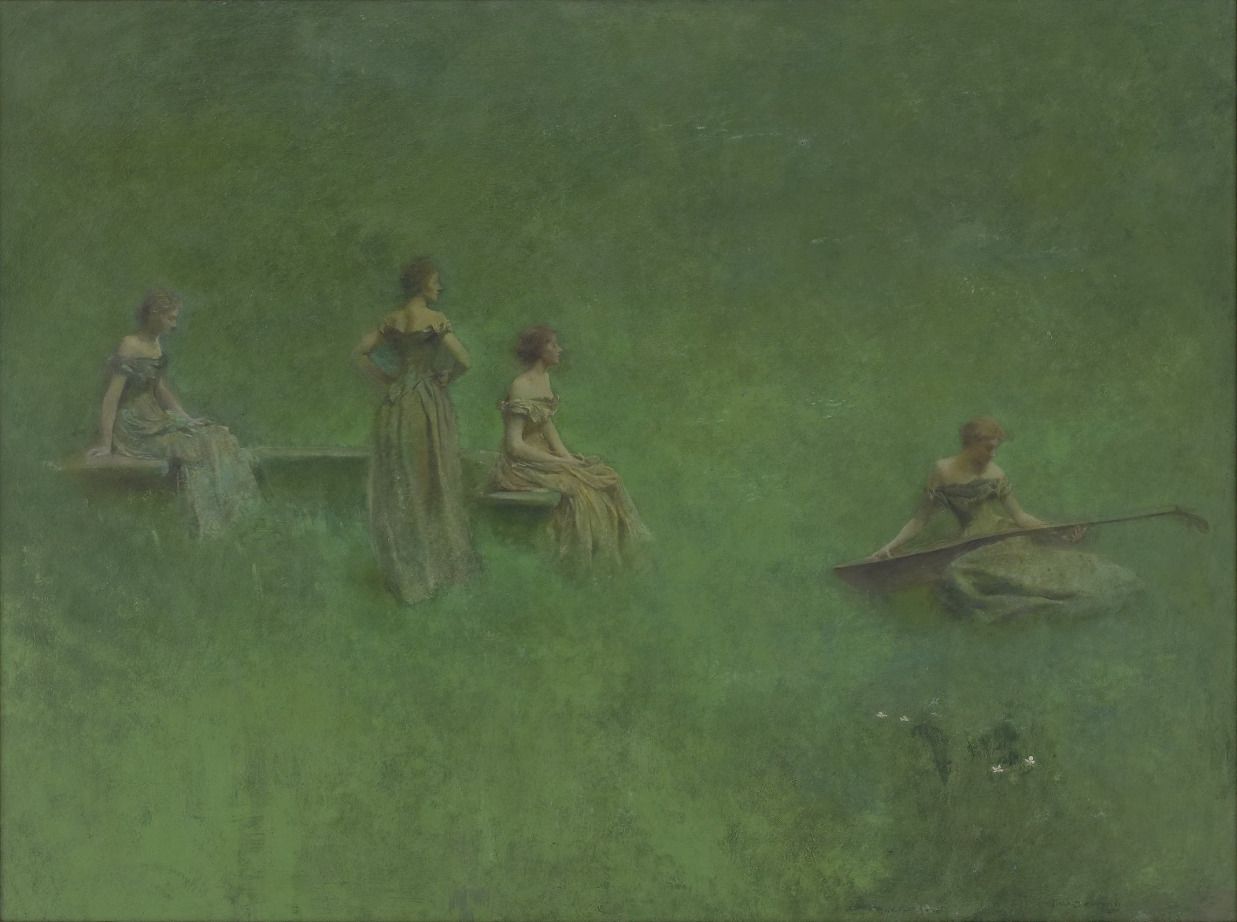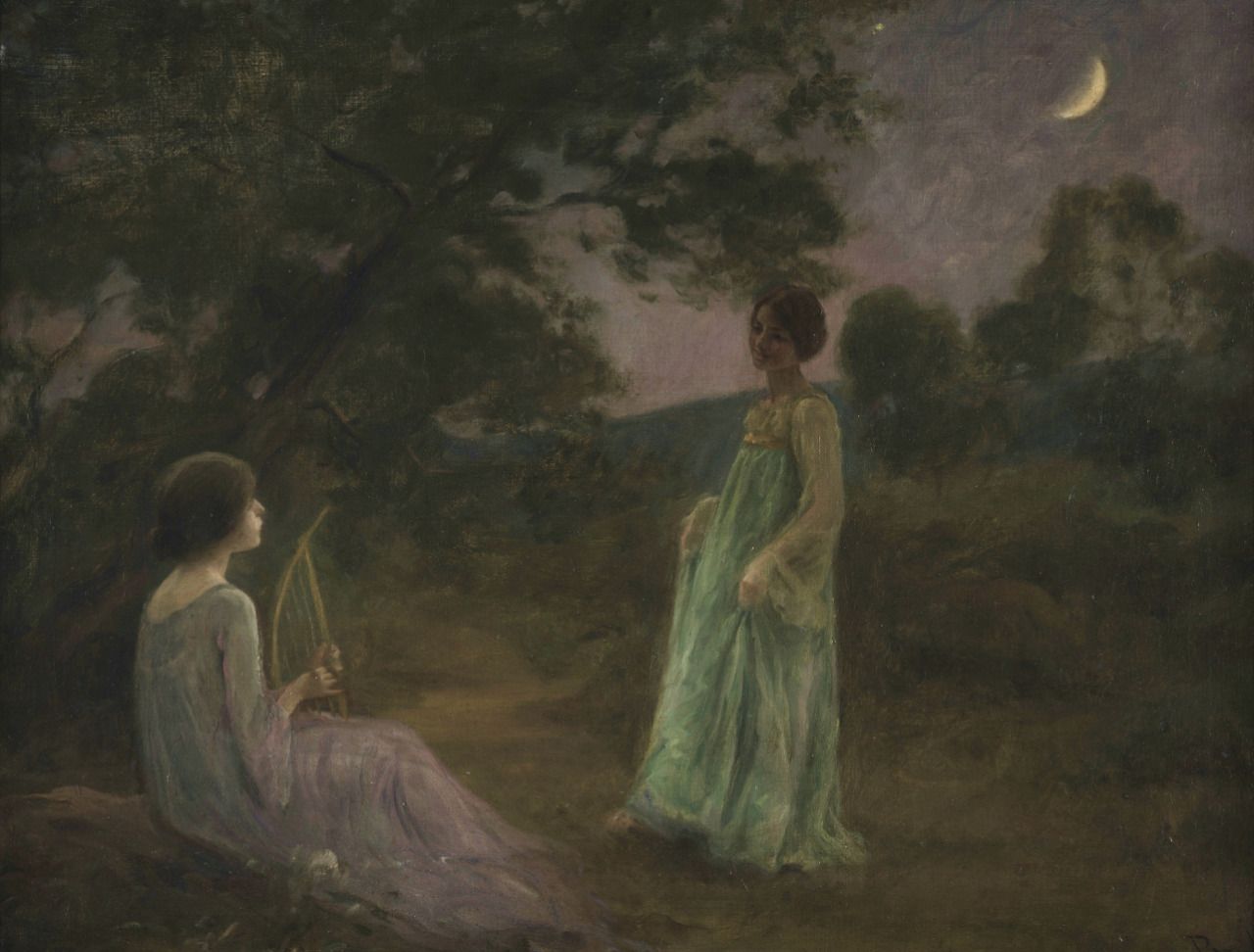meditation 18

Similarly . . .
when savoring the resonance trail
of a sustained musical tone . . .

rendered on a stringed
instrument . . .

as the tone fades
almost imperceptibly . . .
into silence . . .

the felt sense
of one's corporeal form
fades similarly
into void . . .

Like the moon orbiting Earth, each tone of melody in Indian classical music, blossoming within its own moment of unfolding, orbits in contemplation of the harmonic allure of the tonic, which is continually usually voiced by a stringed drone instrument.
A loitering note of melody will fade in pure silence, the timeless womb of all compositions, the true home of all tonic tones — the formless, nice nothingness of one's own form.
Notice how the above musical scale begins with the tonic note (rectangle #1), which is repeated an octave higher at the apex of the ascending scale (rectangle #13) and again at the nadir of the descending scale (rectangle #24).
You may also notice that in its musical journey each non-tonic tone sounds unsettled, as if yearning for the return of the tonic tone.
Notice also how flutelike and dulcet the tonic note (#13) sounds.
▼▼⛛▼⛛▼▼
Please read Swamiji's commentary on this verse in his Manual for Self Realization (John Hughes, ed.).
Swami Lakshmanjoo and Pandit Dina Nath Muju's 1974 – 1975 translation of this verse reads as follows:
Verse 41
Similarly attend to the collective sound produced by (stringed) musical instruments. Watch the succession of sounds in it and then the ending of each note. You will become the great Void.
In Western music, the musical notation for a note, an entire composition, or an entire orchestra fading into silence is called niente.
Niente is Italian for nothingness, void, or also, for almost nothing.
Niente will often surface at the end of a score: signaling the conductor to fade to little more than a mere echo of an angel's whisper . . . the music diminishing ever so gently . . . diminuendo al niente.
The musical symbol for niente is usually written as an n or an ø.
Before Western composers came up with a way to notate them, the length of rests in music were often dictated by buildings. When groups of monks, facing each other in a reverberant chapel, intoned psalms in plainchant, they inserted a pause in the middle of a verse.
The length of this “media distinctio” was partly determined by acoustics: It prevented the next line of lyrics from getting entangled with the resonance trail of the last.
But as the musicologist Emma Hornby has pointed out, it also created a meditative space. It synchronized the community and underlined, as she writes, “the unity of the monastery breathing and singing together.” ~ Corinna da Fonseca-Wollheim, New York Times, Oct. 2, 2019
Beethoven is so often associated with images of him scowling that it’s worth remembering that he, too, was adept at the comic rest. He also mastered the mystical silence, the dramatic silence, and silence-as-sound-painting.
But what Beethoven introduced most forcefully into Western music was the explosive silence. The technique is not unlike that behind comic rests: You carry your listeners along on a train of musical thought that leads them to think they know what’s coming. Then you pull out the rug from underneath.
In the first movement of his “Eroica” Symphony, that train of thought builds up aggressive momentum, culminating in a series of slashing dissonant chords that are repeated with relentless force. Then, on the first beat of the next bar, where the ear expects either more of the same or a resolution of the harmonic tension — a void. “The loudest silence in musical literature,” the musicologists Grosvenor Cooper and Leonard Meyer call this moment.
The shock of a rest such as this one draws its power from a certain regular meter or pattern that has been set up beforehand. At an unconscious level, listeners begin to identify the pulse of the music with their own. When it drops away unexpectedly, the silence delivers a heart-stopping jolt.
Corinna da Fonseca-Wollheim, New York Times, Oct. 2, 2019
“You cannot direct the wind — but you can adjust your sail.” ~ Arvo Pärt

